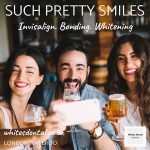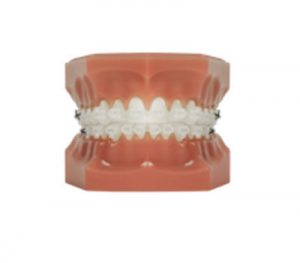What Can You Eat With Fixed Braces
Call us on 0208 616 0590 or email us at [email protected] to book an appointment.


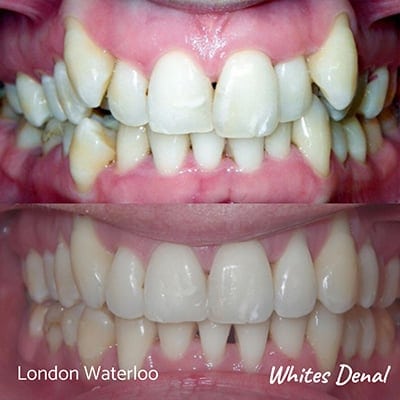

The reasons for wearing Braces
More and more adults in London are choosing to straighten their teeth using fixed orthodontic braces. If you are considering starting brace treatment or already have brace, our dentists can help provide you the expertise and information you need to create a straight smile. At Whites Dental, we offer a range of orthodontic braces in the heart of London – these include Damon braces, ceramic braces, clear brace, lingual brace and fixed metal brace. Why not book a free consultation with one of our dentists to discuss any questions you may have.
Millions of people across the world use orthodontic brace to align or straighten their teeth or help with other dental problems such as gaps, underbite, or overbite. Braces can drastically improve the overall look of your teeth, but it can take days or weeks to adjust to the extra pressure on your teeth. You may also feel some pain or irritation around your teeth and gums during the first few days. However, if you talk with anyone who’s had brace, you will find out that the hardest adjustment might be giving up some of the foods you love. It’s not nice being told what you can and cannot eat but unfortunately with braces there are some rules to follow. Eating foods which are too hard or chewy can in fact damage/break your braces and may cause a delay in your treatment. A patient who is compliant with eating instructions will sail through treatment quicker than someone who isn’t!
So…what can you eat when you first get braces?
Your orthodontist will most likely recommend only eating soft foods for the first few days. Getting braces doesn’t hurt, however your mouth may be quite sensitive in the days following your appointment. You’ll also have to learn how to chew differently and eating foods that have tougher texture could cause pain. Some ideal foods to eat after getting brace include: mashed potatoes, yogurt, soups, scrambled eggs, oatmeal, seafood, soft fruits, soft cheeses, cooked or soft vegetables, moist desserts and pasta. Fundamentally, anything that’s easy to chew. Sensitivity after getting braces should improve after a few days or a week. At that point, you’ll be able to somewhat resume your normal diet.
6 best foods to eat with braces
Yogurt – Yogurts are high in protein and calcium. Plain yogurts that include no added sugars are a great supplement to maintain healthy and strong teeth. Yogurts also have the added benefit of giving your body a boost of beneficial bacteria; this can benefit your gums as the good bacteria is able to crowd out the bad bacteria that causes tooth decay and cavities. Yogurt mixed with a combination of soft fruits can be a perfect snack, especially at a time when your teeth might be sore as it requires little to no chewing. However, please ensure that you brush your teeth after you finish the yogurt. Even simple plain yogurt has a bit of naturally occurring sugars in it.
Chicken noodle soup – Chicken noodle soup is the perfect comfort food according to us. We can’t think of a more perfect comfort food. It’s perfect not just for sick days, but for new braces and aching mouths as well. Homemade chicken soup is even more helpful as the soup broth is full of minerals, collagen and gelatin, all of these elements are needed for strong bones and teeth. D vitamins can help to improve your healing rate and slurping down your soup provides your teeth and jaws a break from chewing. Missing some carbohydrates? You can soak some crackers or bread in your soup, making the crackers / bread soft thus making it easier for your braces to handle.
Sweet potato or mashed potato – If you want to have something a little more substantial that chicken noodle soup, but that’s still soft enough to eat with your braces on, especially when your jaw and teeth are sore – the humble sweet potatoes can be the answer.
Sweet potatoes pack a whole lot of vitamin A, which is very helpful to maintain healthy gums and teeth. Vitamin A helps with maintaining the soft tissues and mucous membrane of the gums, as well as the keratin (a protein) that encourages the formation of your tooth’s enamel. You can prepare sweet potatoes in a number of ways – you could bake, mash, fry, boil or even steam these little beauties to make a delicious snack or side dish for your meals.
Fish – Eating pork, beef and sometimes even chicken can often be a little difficult especially if putting pressure causes pain to your teeth and gums. Fish can be an amazing alternative. Scientists in Harvard have linked omega-3 fatty acids found in fish with less risk of gum disease as omega-3s help to naturally reduce the sort of inflammation that can occur when bacteria irritates your gums. Fatty fishes like Atlantic mackerel and Salmon are very good sources of vitamin D. Vitamin D allows the body to absorb and then use calcium more effectively; this is absolutely critical for your oral health as calcium protects your gums and teeth from disease. And given fish is soft, you should have no trouble eating it with braces on, even when your teeth and jaw are sore.
Cooked vegetables and fruits – Raw vegetables and fruits should usually be avoided with orthodontic braces, not just at the start of your orthodontic brace treatment but over the entire duration of the treatment. This is because their crunch can sometimes cause the brackets and braces wire to come off, potentially interrupting your treatment and requiring a trip to the orthodontist. Boiling or baking the fruits and vegetables will make them soft enough to eat and will reduce the risk of damaging your braces hardware. Most vegetable and fruits contain a whole lot of antioxidants and vitamins (especially C vitamins), which help protect your gums and soft tissue from bacterial infection and cell damage. Leafy green veggies are known to contain a lot of folic acid, which helps to promote healthy teeth and gums, and also supports growth of cells through the entire body. You can certainly eat leafy veggies raw in your salad or side dish if that’s how you prefer to have it. Try to put a rainbow coloured selection of soft fruits and veggies on your plate regularly in order to get the most out of what you eat during your braces treatment.
Eggs – Eggs are usually seen as a source of proteins; however, they are rich in phosphorus. When you combine eggs with vitamin D and calcium, phosphorus helps you build strong teeth and bones. Proteins help in keeping the teeth healthy, reducing the risk of tooth decay. Eggs are very versatile – you can have them boiled, scrambled or poached for breakfast, lunch or dinner or any other time between meals even. Any way you cook eggs, they are soft enough to eat even for the sorest of mouths.
Smoothies – Smoothies are perfect for days when your orthodontic braces have gotten you a bit down. They can be served in a glass on their own or even in a bowl with toppings on. They are fun to make with an endless variety of vegetables, fruits and liquids you can combine together to ensure they are never boring. They are full of minerals and vitamins, proving you with a good source of essential nutrients and they are smooth in texture thus helping sooth any oral discomfort you may have as a result of your braces.
Additional foods that are good to eat:
- Fruits such as bananas, grapes, oranges, strawberries
- Light crackers or low sugar cookies
- Cheese
- Noodle dishes such as spaghetti, ravioli and macaroni and cheese
If you are considering using fixed orthodontic braces to straighten your teeth, why not call us to book a free consults with one of our dentists. You will be able to discuss your needs with them and identify the braces option best suited to you. For more information on orthodontic braces, visit our orthodontics homepage – https://www.whitesdental.co.uk/orthodontist-teeth-straightening-london-waterloo/
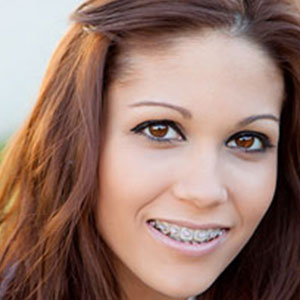

What to avoid eating right after getting braces
As well as knowing what foods you can eat after getting brace, you should also know what foods to avoid right after getting them. Loads of foods are fine to eat with braces. However, some “safe” foods might not be ideal to eat straight after getting braces, since they can irritate your mouth, causing too much pressure and sensitivity. Foods to avoid right after getting brace include:
*ice cream *thick rolls or breads *thicker cuts of meats *spicy foods *citrus foods
You should be able to eat the items above once your teeth adjust to having braces.
Top 8 Worst Foods for Orthodontic Braces
Be mindful that braces are sensitive to damage, so you’ll need to avoid certain foods for as long as you have braces. Some of these foods include sticky and hard foods that are known to damage the wires or bands, or cause a bracket to separate from a tooth.
We find that certain foods consistently create issues for orthodontic braces patients. These issues can range from causing broken brackets to increasing the risk of tooth decay. We have noted below the top 7 food items that are least-friendly for people wearing braces.
Popcorn – It may not sound like it, however, popcorn is probably the single worst food item that you can eat with your orthodontic braces. The reason is popcorn kernels. For someone not wearing braces, popcorn kernels may cause minor discomfort at best and can be easily taken care of by flossing or use of a strategically placed fingernail. However, for patient’s wearing orthodontic braces, popcorn kernels can sometimes get stuck for long periods of time, causing extremely painful swelling to the gums and sometimes requiring the removal of braces and the wires to clean the area properly.
Ice – You are correct, ice technically is not food, but teenagers (and also some adults) love to chew on it. Chewing ice is not good for teeth in general; however it is especially bad for orthodontic braces. We often find that teenagers (and sometimes adults) who show up to their review appointments with multiple broken brackets often admit to chewing ice at home.
Corn on the cob – Corn on the cob is one of the most difficult food items to eat with braces on. It is also often one of the first things patients want to eat once their orthodontic fixed braces are removed. Eating corn is actually perfectly okay, as long as it is removed from the cob first.
Whole apples and raw carrots – Having apples and carrots on this list often surprises patients given they are so healthy and relatively easy to eat. However, eating whole apples and raw carrots requires you to bite with your front teeth, which often causes broken brackets. As with corn on the cob in the paragraph above, cutting the carrots and apples makes them easier to eat and therefore less dangerous for your braces.
Beef jerky – Some teenagers just love to have beef jerky despite its salty taste and extremely strong smell. Unfortunately however, beef jerky needs a lot of effort to chew and therefore, not surprisingly, is bad for your fixed braces.
Hard candy – Hard candies like jolly ranchers and peppermint are the perfect way to break orthodontic brackets, especially if you were to bite down hard on the candy. If you are very fond of having candies, we suggest just sucking on them until they completely dissolve – this won’t break the braces. However, bear in mind that sugar isn’t great for teeth and having lots of candies will likely increase your risk of tooth decay. That’s the last thing you want while undergoing orthodontic treatment.
Sugary gum – Gum is somewhat of a controversial topic for many orthodontists and patients. Some orthodontists allow patients to chew gum while undertaking brace treatment. However, other orthodontists only allow their patients to consume sugar-free gum. Sugary gum should never really be chewed at all as it can increase the risk of tooth decay and therefore cause cavities. Sugar-free gum can sometimes dislodge the thin orthodontic wires that are placed at the start of orthodontic brace treatment.
However, chewing forces unleashed while chewing gum can also make tooth movement more comfortable for the patient, which is why many orthodontists allow the patient’s to have sugar-free gum.
Turmeric – Turmeric, an orange-yellow coloured spice found in Indian and Middle Eastern foods, stains orthodontic braces and Invisalign aligners. We suggest avoiding Indian and Middle Eastern preparations that contain this spice.
How To Eat With Fixed Braces
How you eat with your fixed braces if almost as important as what you eat with them. The first rule of thumb is to chew food slowly so as not to accidentally bite too hard on something, causing your brackets to come lose in the process. The second rule of thumb is to cut your food and fruits into smaller pieces where you can – especially carrots, apples, spaghetti and chewy bread. Third rule of thumb is to bite from the side of your mouth instead of your front teeth. You will find biting from the side a lot easier and this will also prevent food from getting stuck in your front brackets.
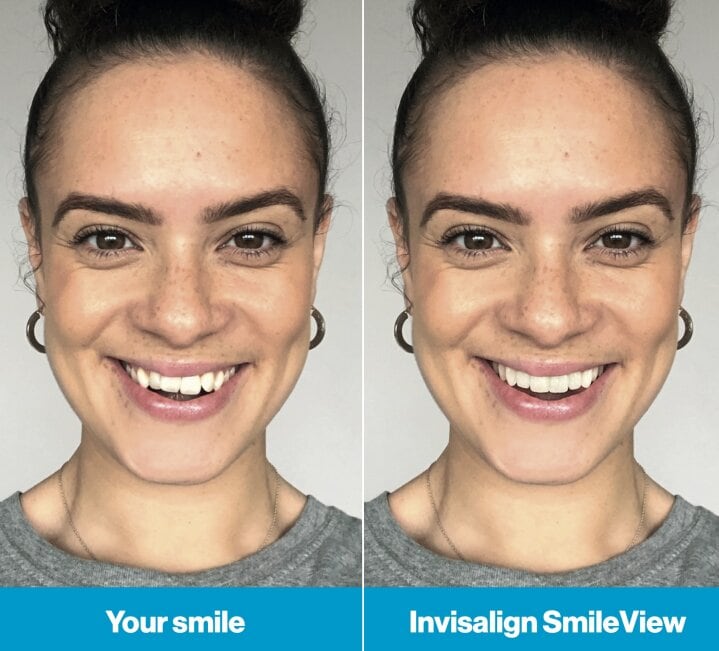

The takeaway message…
Getting braces can improve your teeth. Nevertheless, there is still a risk of damaging your braces and teeth, if you eat the wrong types of food and don’t keep up good dental hygiene. Your will discuss what foods to avoid. If you have any questions, don’t hesitate to ask one of our leading orthodontics at Whites Dental. Unfortunately, damaging your brace could prolong your treatment, meaning you’ll have to wear them for a longer period of time.
Once your braces have settled in, you can eat and enjoy food like you used to. Try and get into the habit of chewing without pushing your food to the side of your mouth. Pieces of food are more likely to get stuck in the braces if they are impacted between the teeth and the inside of your cheek.
Cutting your food into small pieces should help with this and will make it less likely that morsels will get caught anywhere else in the braces. Plan your meals more, so you know you’ll have plenty of time to chew your food slowly, rather than trying to eat large meals in a rush. In addition, you may find this article – the best foods for braces helpful in keeping your diet healthy, low sugar and least likely to cause damages or breakages to the brace system.
For more information on fixed braces, visit our orthodontics page below – https://www.whitesdental.co.uk/orthodontist-teeth-straightening-london-waterloo/
Whites Dental has some of the leading orthodontic dentists in London Bridge, providing fixed brace, six month smiles, fast braces, damon braces and Invisalign clear brace to patients near us in London Bridge, Central London, Southwark, Elephant and Castle and London Waterloo. Our webpage provides information on how to find a good orthodontist in London. We are located in London Waterloo, adjacent to Waterloo train station and across the road from Southwark Tube station. We are also a 10 minutes’ walking distance from London Bridge, Elephant and Castle tube station and Borough Market and 5 minutes’ walking distance from Blackfriars and Southbank stations.


